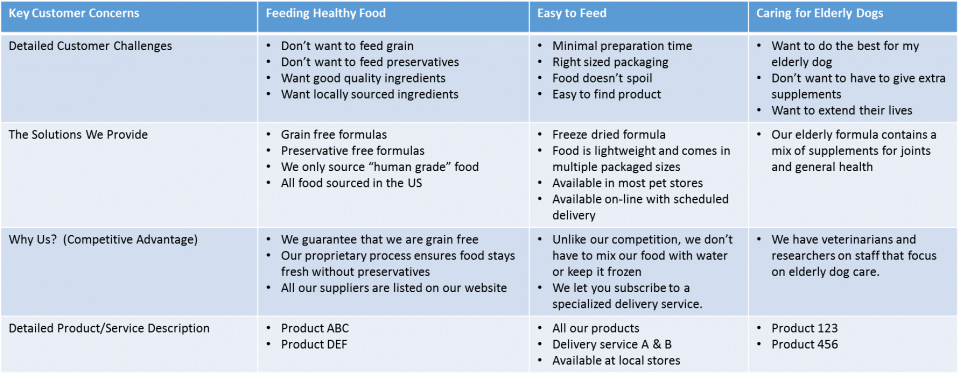
When Google made “responsive design” a key search factor, it prompted many companies to revamp their websites. Using business scenarios to shape new website content helps deliver the right messages.
Where to Start
Just like writing a term paper or book, it helps to have an outline of what you want to say. For website development, I think a messaging and positioning framework based on business scenarios works the best. These are crafted into a matrix with key business scenarios/concerns as column headers, and business solutions in rows underneath.
Let’s take an example of a dog food company. In talking with their customers over time, they have identified a number of key concerns:
1. Feeding Healthy Food
2. Easy to Feed
3. Caring for Elderly Dogs
So our (overly simplified) business scenario matrix may look something like this:


Advantages of Using a Business Scenario Approach
Creating an outline based on business scenarios forces you to look at your business from your customers’ perspective. If you are not providing the products and services that meet their needs, then you may need to think about updating your offerings.
The business scenario matrix should serve as your key content resource. Not only does this drive website content, but it can be used for brochures, advertising, newsletters, and press releases. This also helps to ensure that your messaging and collateral is consistent across all channels of delivery.

